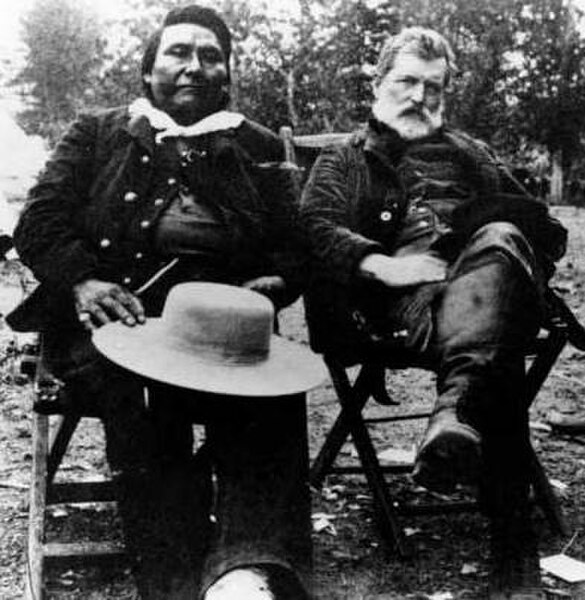The Battle of the Big Hole was fought in Montana Territory, August 9–10, 1877, between the United States Army and the Nez Perce tribe of Native Americans during the Nez Perce War. Both sides suffered heavy casualties. The Nez Perce withdrew in good order from the battlefield and continued their long fighting retreat that would result in their attempt to reach Canada and asylum.
Big Hole battlefield
Big Hole Battlegrounds, 2003
Chief Joseph and Col. John Gibbon met again on the Big Hole Battle site in 1889
The Nez Perce War was an armed conflict in 1877 in the Western United States that pitted several bands of the Nez Perce tribe of Native Americans and their allies, a small band of the Palouse tribe led by Red Echo (Hahtalekin) and Bald Head, against the United States Army. Fought between June and October, the conflict stemmed from the refusal of several bands of the Nez Perce, dubbed "non-treaty Indians," to give up their ancestral lands in the Pacific Northwest and move to an Indian reservation in Idaho Territory. This forced removal was in violation of the 1855 Treaty of Walla Walla, which granted the tribe 7.5 million acres of their ancestral lands and the right to hunt and fish on lands ceded to the U.S. government.
Chiefs Joseph, Looking Glass, and White Bird in the spring of 1877
Gen. Oliver Otis Howard in a Civil War-era photograph.
Nez Perce warriors
Chief Joseph, at Tongue River Cantonment in Montana Territory, taken by John H. Fouch on October 23, the same day the Nez Perce prisoners arrived, three weeks following the surrender.







